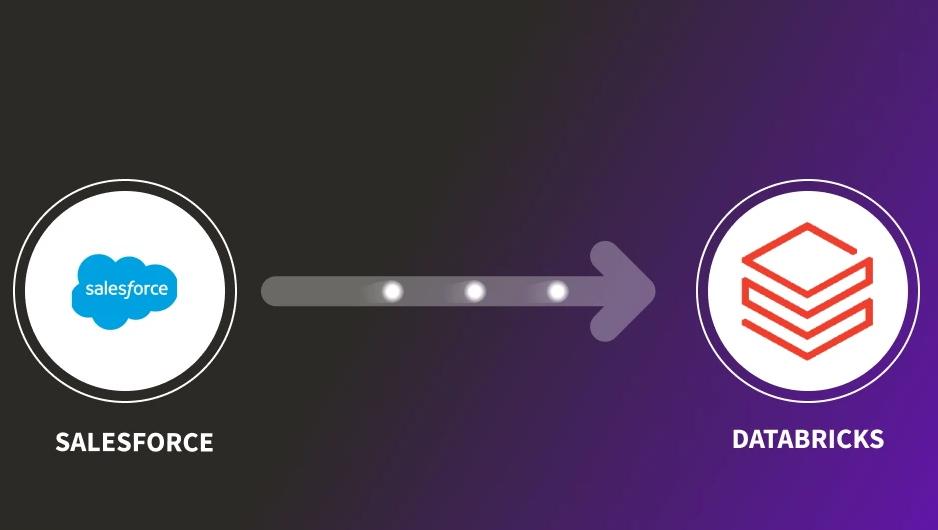Unveiling Salesforce’s BYOM Integration with Databricks

Introduction
In an era where data drives decision-making, Salesforce and Databricks have become pivotal in helping businesses harness the power of their information. Salesforce, known for its robust CRM capabilities, and Databricks, a leader in data and AI solutions, have joined forces to create a game-changing integration—Salesforce’s “Bring Your Own Model” (BYOM) for Databricks.

This integration empowers businesses to leverage their custom machine learning models within the Salesforce platform, combining Databricks’ advanced data processing capabilities with Salesforce’s extensive CRM tools. The result is a flexible, powerful solution that enables companies to optimize their data-driven strategies and achieve more personalized customer experiences.
Understanding BYOM
Bring Your Own Model, or BYOM, is an idea that enables companies to use their proprietary machine learning models on a larger platform—in this example, Salesforce. Contrary to traditional model deployment, which frequently restricts businesses to using the platform’s pre-configured models, BYOM gives them the freedom to bring models that have been specially customized to fit certain business requirements.

For businesses with unique needs, this flexibility is essential because it lets them make the most of their internal data science resources. Salesforce has made it possible for these custom models to be smoothly integrated into its CRM ecosystem by combining BYOM with Databricks. This improves the platform’s capacity to provide accurate and contextually relevant insights.
Key Features of the Salesforce and Databricks Integration
The Salesforce and Databricks integration introduces several key features designed to optimize the use of custom AI models within the Salesforce ecosystem. Firstly, the integration offers seamless model deployment, allowing businesses to quickly and easily integrate their models into Salesforce without extensive reconfiguration.
Secondly, it enhances data analytics capabilities by leveraging Databricks’ powerful data processing engine, which can handle large volumes of data and perform complex computations.

Lastly, the integration is designed for scalability, ensuring that as a business grows, its AI models can scale accordingly without sacrificing performance. These features collectively make the Salesforce-Databricks integration a robust tool for businesses looking to maximize the impact of their AI initiatives.
Benefits of Integration for Businesses
The Salesforce BYOM integration with Databricks offers numerous benefits for businesses looking to leverage AI in their operations. One of the most significant advantages is the customization it offers; businesses can tailor their AI models to their specific needs, ensuring that the insights generated are highly relevant and actionable. This level of customization leads to improved decision-making, as businesses can rely on data-driven predictions that are closely aligned with their operational goals.

Additionally, the integration streamlines operations by allowing businesses to deploy existing models without the need for significant changes, saving time and resources. Finally, by enabling businesses to experiment with different models and approaches, this integration fosters a culture of innovation, driving continuous improvement and competitive advantage.
Practical Applications and Use Cases
Custom AI models enable hyper-personalized interactions that enhance customer satisfaction and loyalty.
Salesforce’s BYOM integration with Databricks offers a wide range of practical applications across various business functions. In customer experience management, companies can utilize custom AI models to create hyper-personalized interactions, leading to increased customer satisfaction and loyalty.
Example: A retail company uses custom AI models to tailor product recommendations, leading to higher customer engagement.
Predictive analytics helps in identifying leads, optimizing campaigns, and forecasting sales trends.
In sales and marketing, predictive analytics can be applied to identify potential leads, optimize marketing campaigns, and accurately forecast sales trends.
Example: A tech firm applies predictive analytics to identify high-potential leads, boosting conversion rates.
Automating routine processes with AI-driven insights enhances operational efficiency and supports strategic decision-making.
Furthermore, automating repetitive tasks and applying AI-driven insights to strategic decision-making might improve operational efficiency. This illustrates the versatility of the Salesforce-Databricks integration and its ability to drive significant business outcomes.
Example: A manufacturing company automates routine tasks with AI, reducing manual errors and increasing productivity.
Steps to Get Started with BYOM on Salesforce and Databricks
The BYOM connectivity between Salesforce and Databricks is intended to be simple to initiate. Businesses must first make sure that the Salesforce platform and Databricks ecosystem are compatible with their bespoke models. To help users with this process, Salesforce offers comprehensive documentation that covers everything from API integration to model layout.

When the models are prepared, they can be added to Salesforce and utilized to produce insights alongside the CRM capabilities on the platform. To assist organizations in optimizing their models and guaranteeing optimal performance, Databricks provides a suite of tools and support services. Businesses can immediately begin to reap the rewards of this potent synergy with the correct planning.
Challenges and Considerations
Although there are many benefits to the Salesforce BYOM integration with Databricks, companies should be aware of any potential drawbacks as well. Compliance and data security are important factors to take into account, especially for businesses handling sensitive data. It is crucial to make sure that data is handled securely and that custom models adhere to legal requirements.

Furthermore, integrating extremely sophisticated models with the Salesforce platform may present technical difficulties that call for thorough preparation and perhaps professional assistance. The models’ correctness and applicability are other factors to take into account. Companies must make sure that their models are updated and adjusted on a regular basis to take into account shifting market conditions and corporate goals. Effectively resolving these issues can aid in optimizing the benefits obtained from the integration.
Future of AI in CRM with Salesforce and Databricks
This is just the start of a larger trend toward more customized and data-driven customer relationship management (CRM), which includes the integration of BYOM between Salesforce and Databricks. Even more advanced technologies that enable companies to customize their CRM strategy with never-before-seen accuracy should be on the horizon as AI develops.

With Salesforce and Databricks collaborating, new developments in AI models that are more intuitive and have real-time learning and adaptation capabilities are possible. This progress will likely push the boundaries of what CRM systems can achieve, leading to new industry standards. The future of CRM appears to be becoming more intelligent and dynamic as companies continue to use and develop AI.
Conclusion
The Salesforce BYOM integration with Databricks is a major step forward in leveraging AI within CRM systems. By enabling seamless deployment of custom models in Salesforce, it offers flexibility, scalability, and advanced analytics. This integration can personalize customer interactions, enhance decision-making, and streamline operations. Businesses that fully embrace and optimize these tools will be well-equipped to succeed in a data-driven world.



